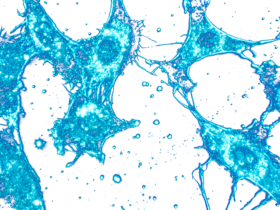Common cell culture terms are defined in the Guidelines for the Use of Cell Lines in Biomedical Research, which is available online. ICLAC has included additional definitions as part of its Terms of Reference, some of which are copied here.
See ICLAC Terms of Reference
See Guidelines for the use of Cell Lines in Biomedical Research
Authentication
The aim of authentication is to confirm or verify the identity of a cell line, demonstrating that it is derived from the correct species and donor.
Testing involves comparison of a test sample to other reference samples from that donor, or to a database of reference samples if donor material is not available, to see whether their genotypes correspond. Ideally, the test method should distinguish between different species and different individuals within that species, although this will depend on the technology available to the field of authentication testing.
Not all currently used test methods have the power of discrimination of STR profiling or SNP testing; therefore authentication may not in all cases lead to unambiguous identification of cells to a specific donor. Where unambiguous identification is not possible, species verification using methods such as CO1 barcoding, is used as the best alternative currently available.
Cross-contamination
The term contamination refers to introduction of foreign material into a cell culture. Cross-contamination occurs when that foreign material consists of cells from another culture, either human cells or non-human cells arising from species such as mouse or rat.
Cross-contamination initially results in a mixed culture, containing cells from the authentic culture and the contaminant. If the contaminant has a survival advantage – for example, if it proliferates more rapidly – it will overgrow and replace the authentic cells within the culture. A contaminant usually comes from a different donor or species and so can be detected by authentication testing.
Misidentification
A misidentified cell line no longer corresponds to the donor or species from which it was originally established.
Misidentification may arise due to cross-contamination. It may also arise from a variety of errors, including mislabelling of samples. If it happens early – for example, during cell line establishment – there will be no authentic material retained, and the cell line is considered to be a falsely identified or misidentified cell line. If misidentification happens late – for example, after the cell line is established and distributed to other locations – then authentic material may still exist and only some stocks may be false.
Misidentification does not refer to problems with the technical procedure of authenticating cell lines. It also does not typically extend to other characteristics such as tissue type, cell type, or disease state. If the tissue type, cell type, or disease state of a cell line is incorrectly attributed, the cell line is considered to be misclassified.
















